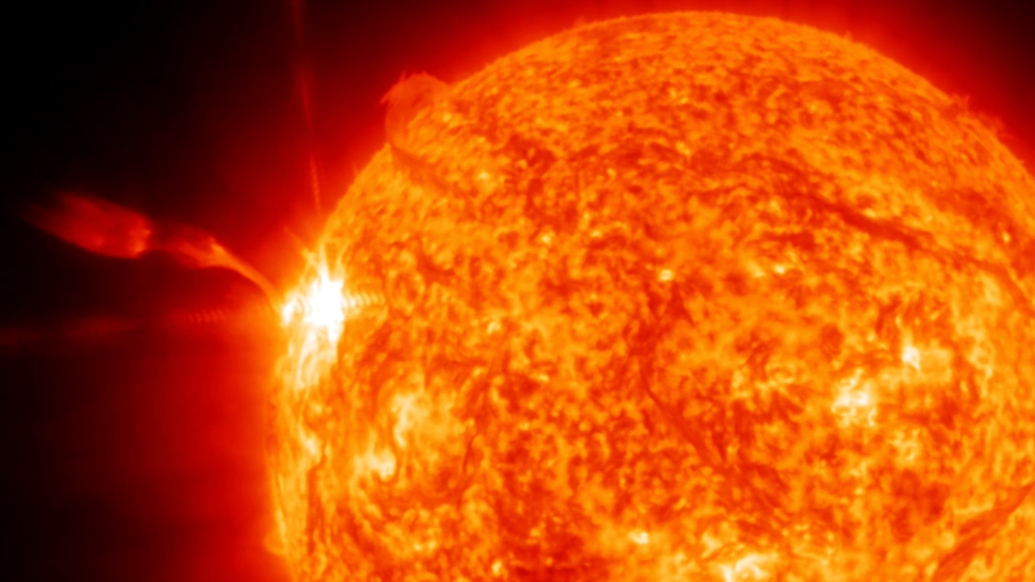Voyager 1 Spacecraft's Road to Interstellar Space: A Photo Timeline
NASA's Voyager 1 Spacecraft

NASA's Voyager 1 spacecraft launched in 1977 and reached interstellar space 35 years later. Take a look at Voyager 1's bold journey into a new space frontier with this SPACE.com timeline. [See SPACE.com's Compete Coverage: Voyager 1 In Interstellar Space]
Sept. 5, 1977: Voyager 1 Launch
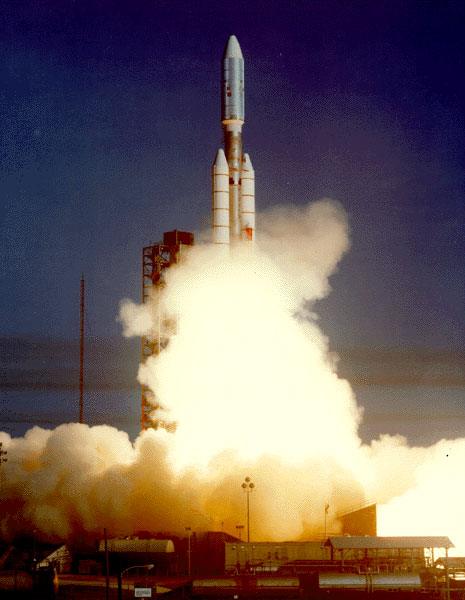
This photo shows NASA's Voyager 2's launch on Aug. 20, 1977. Voyager 1 launched on Sept. 5 of the same year. [See SPACE.com's Compete Coverage: Voyager 1 In Interstellar Space]
Sept. 5, 1977: Voyager 1 Snaps Photo of Earth and Moon
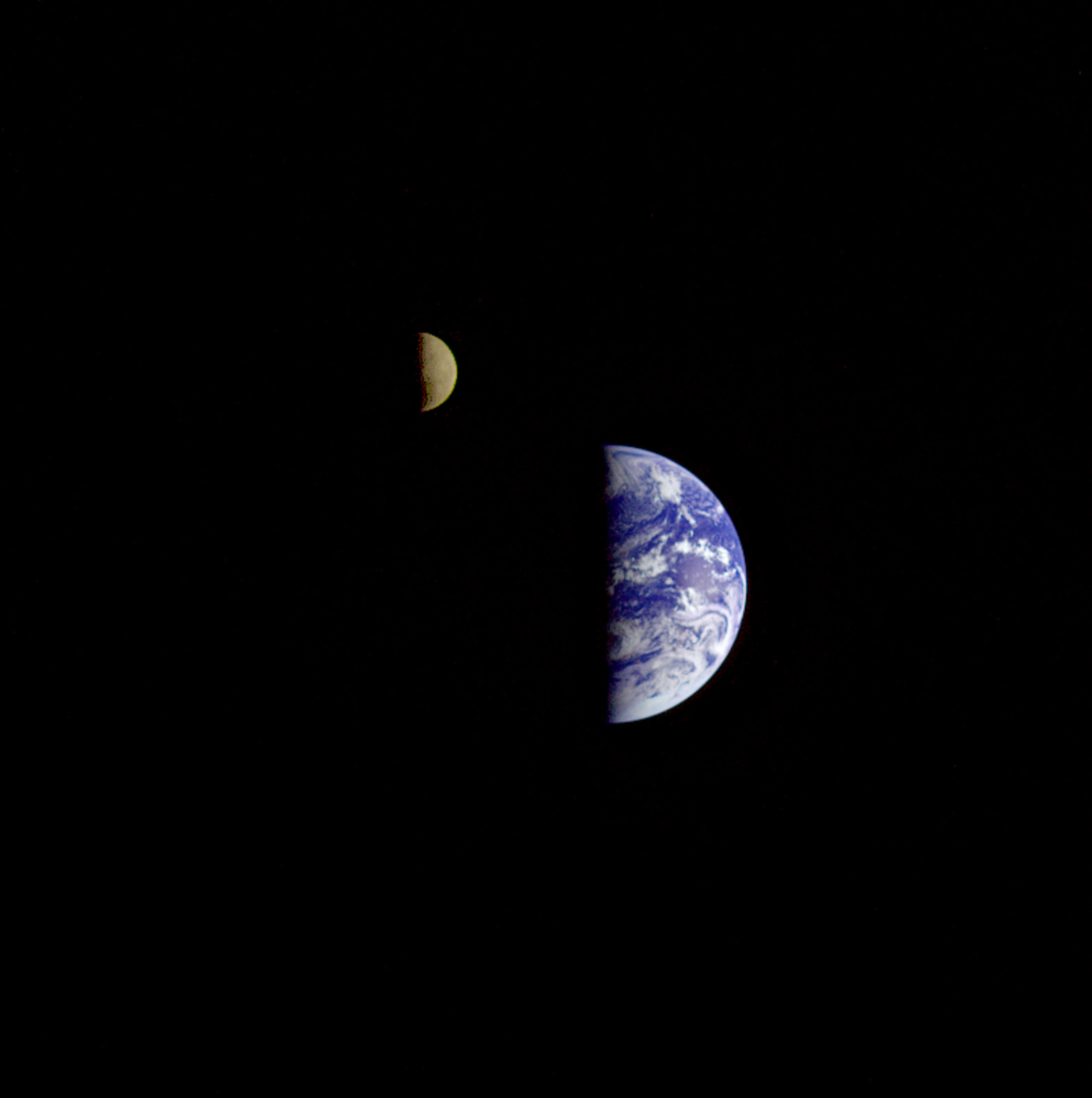
This image of the Earth and moon in a single frame, the first of its kind ever taken by a spacecraft, was recorded on Sept. 18, 1977, by Voyager 1 when it was 7.25 million miles from Earth. The moon is at the top of the picture and beyond the Earth as viewed by Voyager. [See SPACE.com's Compete Coverage: Voyager 1 In Interstellar Space]
March 5, 1979: Voyager 1 Makes Jupiter Flyby

Voyager 1 took photos of Jupiter and two of its satellites (Io, left, and Europa). The new study says that moons orbiting a gas giant planet greater than 8 Jupiter masses could help astronomers detect a rogue planet. [See SPACE.com's Compete Coverage: Voyager 1 In Interstellar Space]
Nov. 12, 1980: Voyager 1 Flies By Saturn
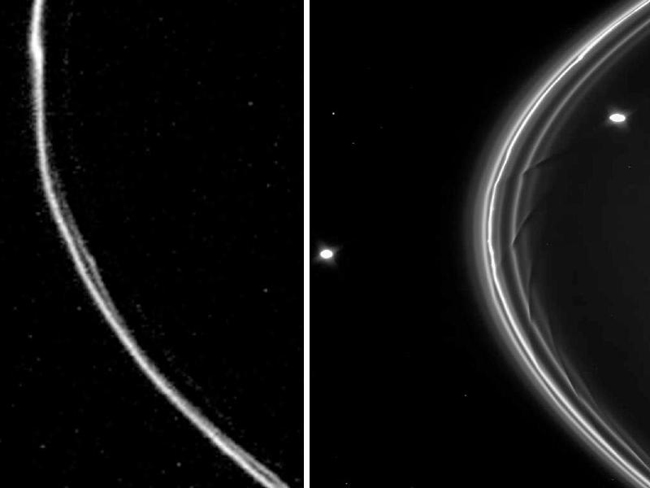
NASA's Voyager 1 spacecraft revealed the kinks in one of Saturn's narrowest rings. The Voyager 1 image (left) was released on Nov. 12, 1980. The closer view of the F ring (right) was obtained by NASA's Cassini spacecraft on April 13, 2005. The moon Pandora is to the left (exterior) of the ring and the moon Prometheus is to the right (interior) of the ring. [See SPACE.com's Compete Coverage: Voyager 1 In Interstellar Space]
1982: NASA Upgrades Deep Space Network Antennas
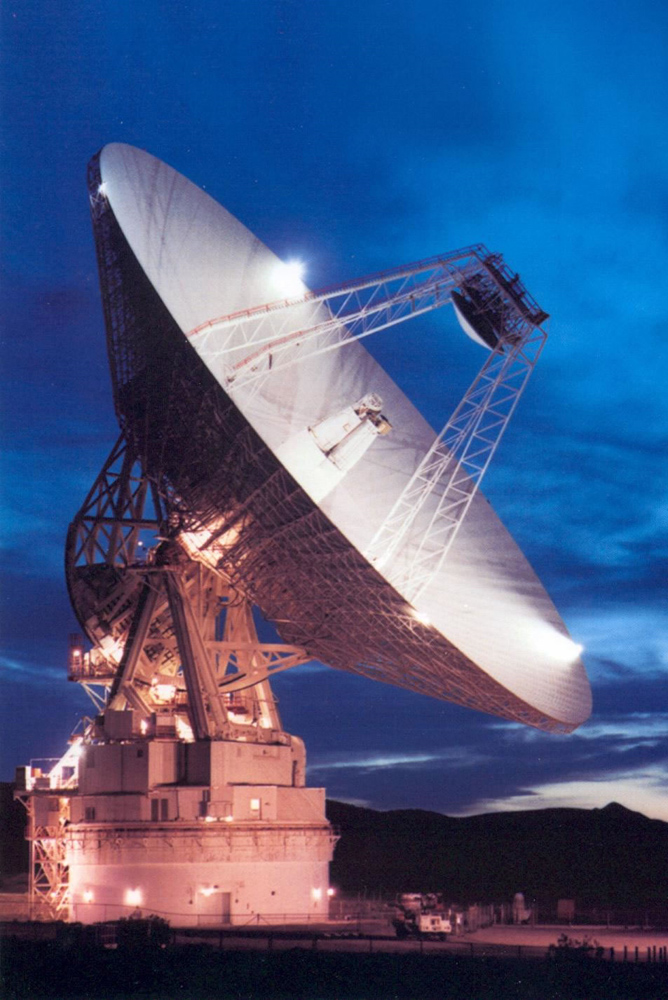
In 1982, NASA upgraded its Deep Space Network of antennas which it uses to control and receive messages from Voyager 1 and its twin Voyager 2. [See SPACE.com's Compete Coverage: Voyager 1 In Interstellar Space]
Jan. 1, 1990: Voyager Begins Extended' Interstellar Mission '

This artist's concept shows plasma flows around NASA's Voyager 1 spacecraft as it gets close to entering interstellar space. The orange arrow shows the direction of the solar wind. Image released Dec. 3, 2012. [See SPACE.com's Compete Coverage: Voyager 1 In Interstellar Space]
Breaking space news, the latest updates on rocket launches, skywatching events and more!
Feb. 14, 1990: Voyager Takes Final Solar System Portrait

This narrow-angle color image of the Earth s a part of the first ever "portrait" of the solar system taken by Voyager 1. The spacecraft acquired a total of 60 frames for a mosaic of the solar system from a distance of more than 4 billion miles from Earth and about 32 degrees above the ecliptic. Image released Feb. 14, 1990. [See SPACE.com's Compete Coverage: Voyager 1 In Interstellar Space]
Feb. 17, 1998: Voyager 1 passes Pioneer 10

On Feb. 17, 1998, Voyager 1 became the farthest manmade object in space when it passed Pioneer 10 on the way out of the solar system. [See SPACE.com's Compete Coverage: Voyager 1 In Interstellar Space]
Voyager Signal Spotted By Earth Radio Telescopes

In 1990, Voyager 1 took the famous "Pale Blue Dot" picture looking back at Earth. In 2013, the Very Long Baseline Array got the reverse-angle shot — this radio telescope image showing the signal of the spacecraft as a similar point of light. Image released Sept. 12, 2013. [See SPACE.com's Compete Coverage: Voyager 1 In Interstellar Space]
August 2012: Voyager Enters Interstellar Space
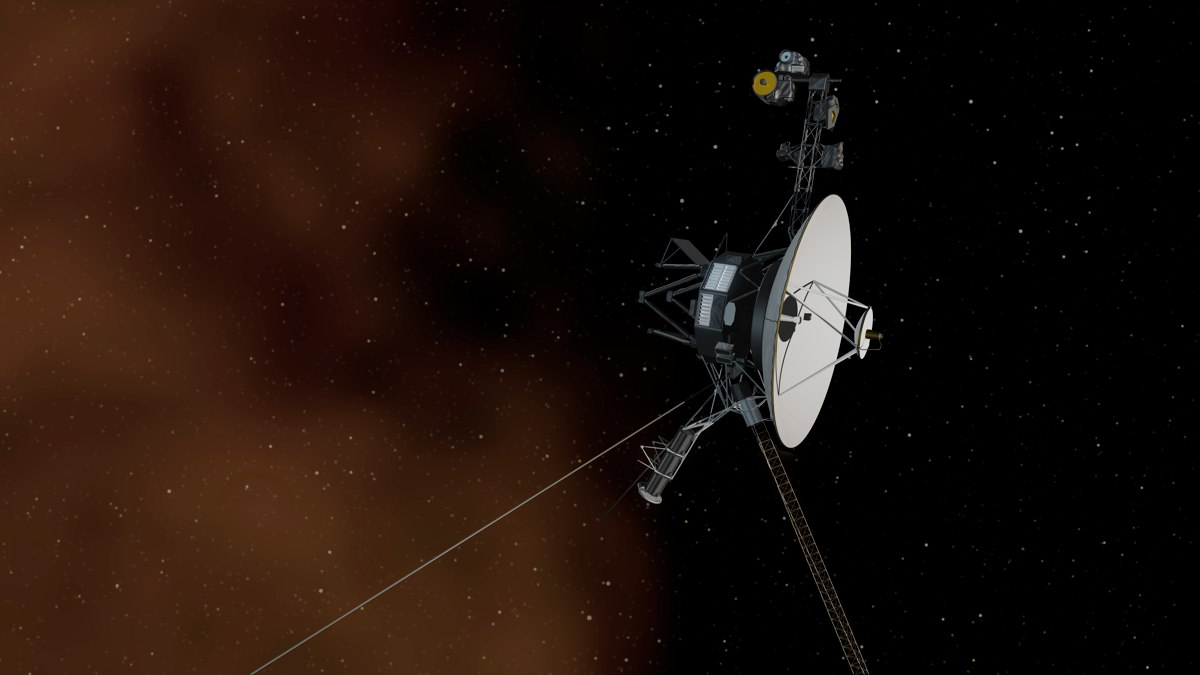
This artist's concept depicts NASA's Voyager 1 spacecraft entering interstellar space, or the space between stars. Interstellar space is dominated by the plasma, or ionized gas, that was ejected by the death of nearby giant stars millions of years ago. The environment inside our solar bubble is dominated by the plasma exhausted by our sun, known as the solar wind. The interstellar plasma is shown with an orange glow similar to the color seen in visible-light images from NASA's Hubble Space Telescope that show stars in the Orion nebula traveling through interstellar space. Image released Sept. 12, 2013. [See SPACE.com's Compete Coverage: Voyager 1 In Interstellar Space]
Join our Space Forums to keep talking space on the latest missions, night sky and more! And if you have a news tip, correction or comment, let us know at: community@space.com.

Tariq is the award-winning Editor-in-Chief of Space.com and joined the team in 2001. He covers human spaceflight, as well as skywatching and entertainment. He became Space.com's Editor-in-Chief in 2019. Before joining Space.com, Tariq was a staff reporter for The Los Angeles Times covering education and city beats in La Habra, Fullerton and Huntington Beach. He's a recipient of the 2022 Harry Kolcum Award for excellence in space reporting and the 2025 Space Pioneer Award from the National Space Society. He is an Eagle Scout and Space Camp alum with journalism degrees from the USC and NYU. You can find Tariq at Space.com and as the co-host to the This Week In Space podcast on the TWiT network. To see his latest project, you can follow Tariq on Twitter @tariqjmalik.
